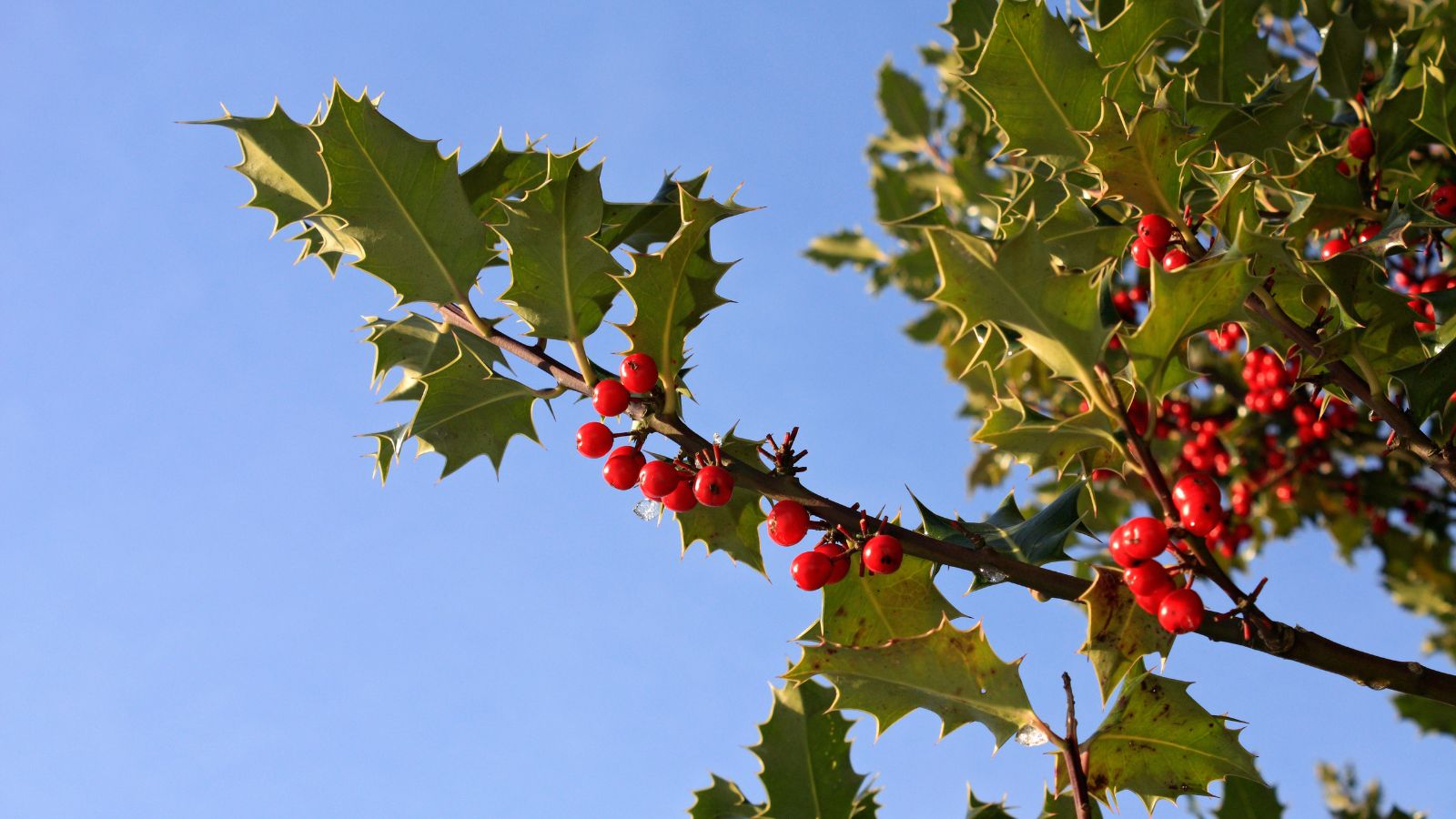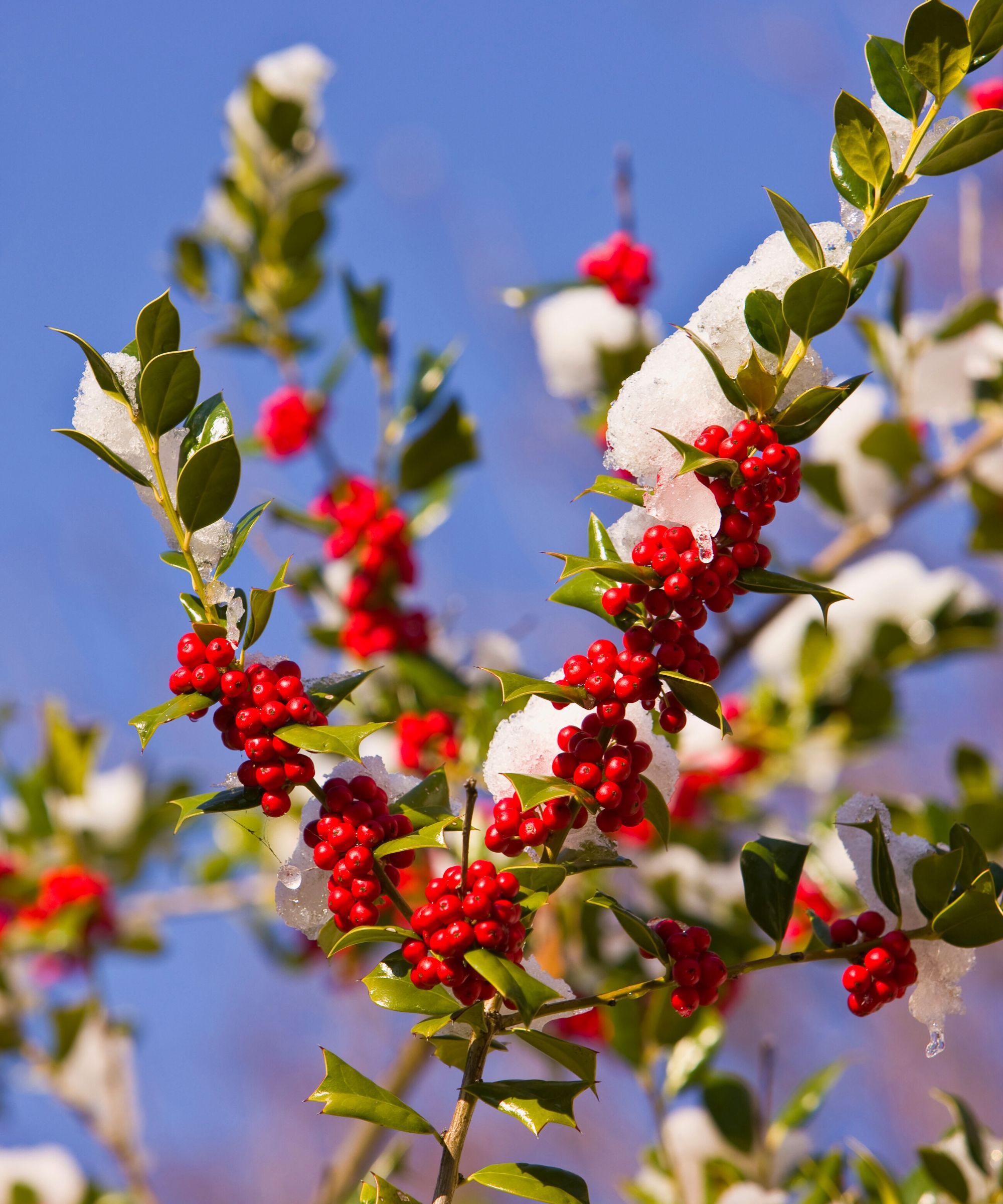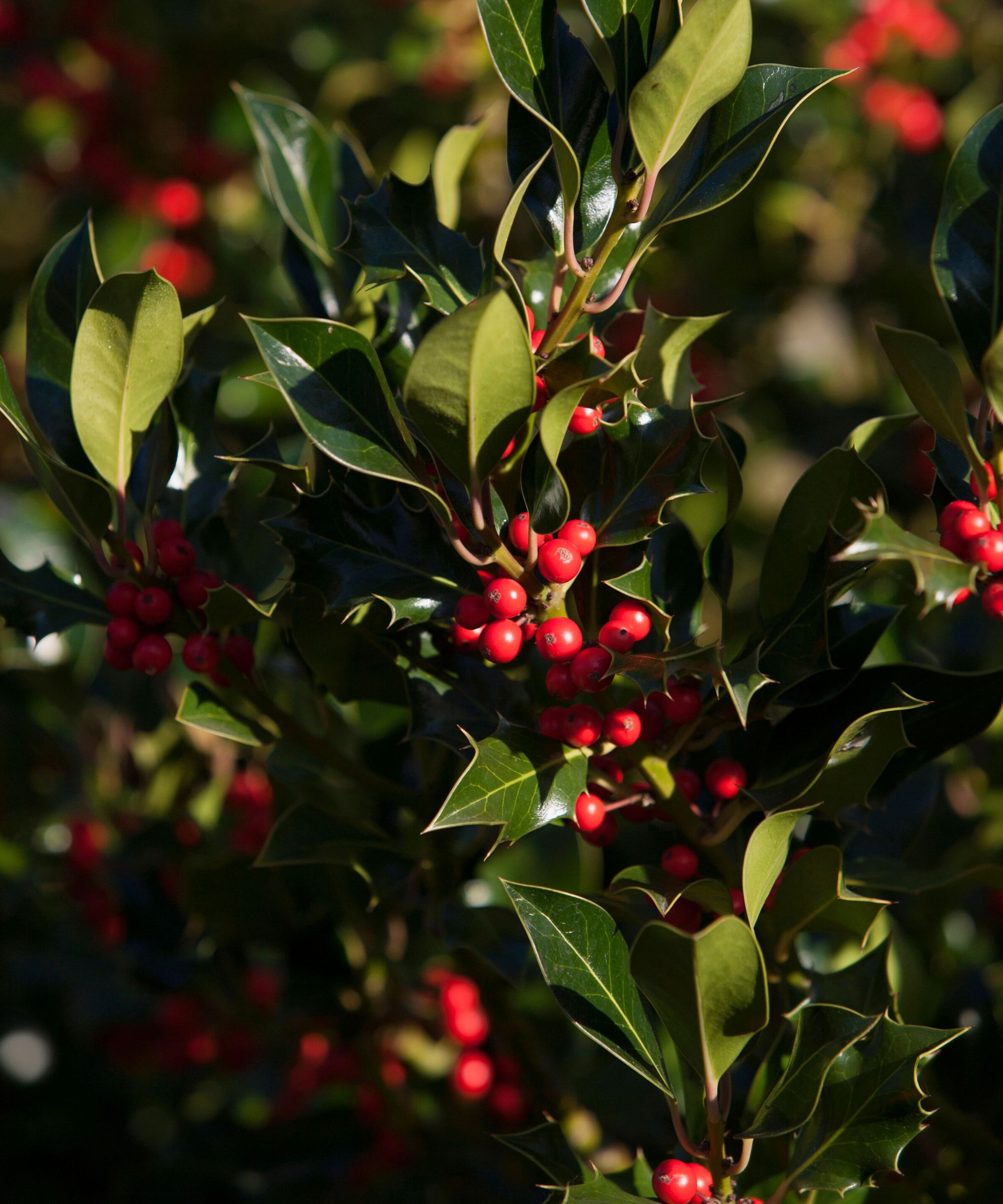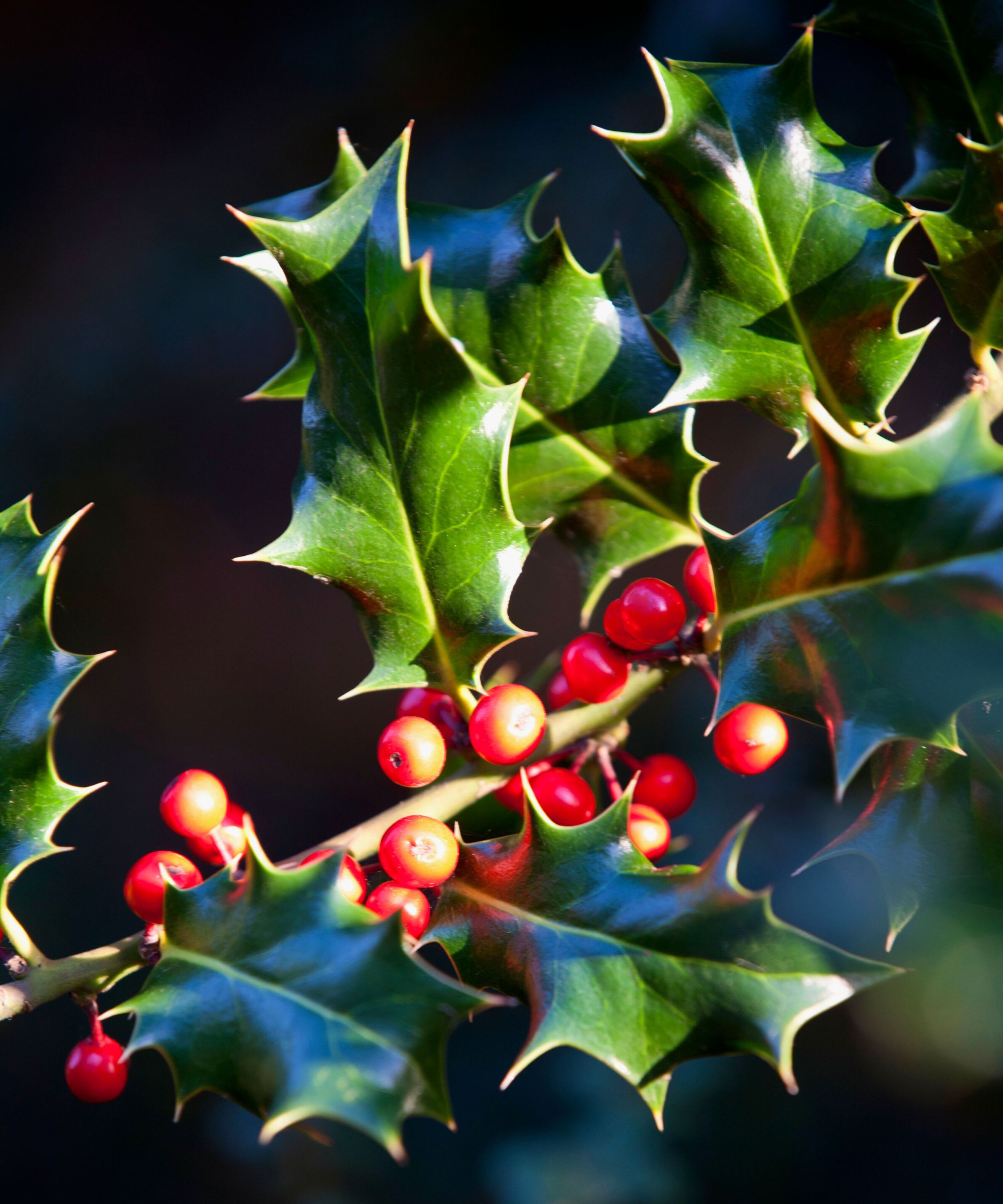When to prune holly bushes – to keep this festive bush in check
Learn how and when to prune holly bushes safely for a tidy, iconic addition to your garden


There are hundreds of varieties of holly bushes around the world, but their iconic spiked leaves and often bright red berries mean they can be distinguished anywhere. Learning how and when to prune holly bushes, however, is important to prevent its dangerous leaves from encroaching on the rest of your garden.
Holly tree pruning should be carried out at least yearly to help shape the tree and prevent its sharp leaves from growing wildly over other plants and flowers. Because most varieties of these plants are some of the best evergreen shrubs, it is important to maintain their shape year round.
Luckily, when done properly, pruning holly bushes is simple, making them a brilliant addition to your garden ideas.
When to prune holly bushes

The best time to prune holly bushes is in late spring, around April, when the chances of frosts are low. This allows any new sprouts to thrive over the summer months with less chance of being damaged by cold weather.
Unlike flowering bushes, holly should be pruned after it has begun to form new berries, rather than after a blooming period has ended to encourage growth and safeguard your berry production.
Although you can prune holly bushes in the colder months, it is advised against. ‘Pruning too late could result in stunted growth,’ says Rachel Crow, garden editor for Homes & Gardens. ‘When you prune your holly bushes can also depend on its variety.
‘Common holly bushes such as American bushes should not be pruned in summer as it can result in very few berries in winter, whereas Chinese holly doesn't require much pruning at all as it should retain its compact shape. Japanese hollies, on the other hand, should be pruned in the late winter, making it an exception, however, can be pruned up until late spring.’
Design expertise in your inbox – from inspiring decorating ideas and beautiful celebrity homes to practical gardening advice and shopping round-ups.
You can prune holly branches in the winter months as long as it is done sparingly. Many people like to snip holly to use as Christmas decorations – to do this safely cut small amounts at a time and remember that the following year's crop may be reduced as a result.
A holly bush with a significant amount of berries is a sign of a healthy, happy plant. What’s more, these berries provide a great food source for birds and other wildlife despite behind toxic to humans. Because of this, holly bushes make great additions to your wildlife garden ideas.
Why prune holly bushes?

Usually, holly bushes are pruned to maintain their size and shape. They are generally very tolerant of pruning, especially when done correctly, and so make some of the best shrubs for the front of the house as they can be shaped to look neat as well as offer a form of security with their sharp leaves.
Holy bushes make brilliant winter garden ideas due to their evergreen nature and iconic Christmas connotations, so pruning is also important to encourage new growth and rejuvenate your plants to withstand the rest of the year.
Pruning is a great way of checking your plant for damage and disease so you can ensure you have the healthiest plants. Holly bushes are susceptible to holly leaf blight which can be identified by purple or black spots on leaves or stems. Holly leaf miner can be mistaken for holly leaf blight but often manifests as yellow-purple or yellow-white marks instead.
Do not be alarmed if your holly bush leaves are turning yellow in the summer, however, as this is the normal shedding of old leaves.
How to prune holly bushes

When pruning holly it is recommended to wear thick gardening gloves and long sleeves to protect your hands and arms from the sharp spikes. You should also prevent getting your face too close to the bush as you work to protect your skin and eyes from scratches.
‘Prune holly bushes with intention,’ recommends Rachel. ‘You want to prune the bush's stems rather than just the leaves, using sharp secateurs to remove any damaged or dying branches. To shape the bush, cut branches just about the new leaf buds to ensure new growth goes undisturbed.’
How far can you cut back holly?
When pruning a holly bush you should never trim back more than one-third of the total plant. When pruning, you mustn't cut the lower branches shorter than the higher branches, as sunlight will not reach them and they will likely die as a result and weaken your plant overall.
How do I know what kind of holly bush I have?
The best way to tell different holly bushes apart is by looking at the leaves and berries. Each variety has differences in their leaves and berries.
Evergreen Hollies
Chinese Holly: These evergreens has dark green leaves with pronounced spines.
Japanese Holly: These hollies tolerate colder weather better than summer heat, and are softer in texture than Chinese hollies. They are great landscape plants that come in a range of shapes and sizes.
American Holly: American holly can grow up to 60 feet tall but grows very slowly, so it is not used very often in residential landscaping. These typically produce more berries than other varieties.
Inkberry Holly: Inkberries produce black kberries, hence the name, rather than red berries.
Deciduous Hollies
Possumhaw: These hollies come in the form of small trees, growing to a height of around 30 feet at its tallest. It has a heavy set of orange and red berries which stay on the branches even when the leaves have fallen.
Winterberry Holly: Winterberry hollies are similar to Possumhaw hollies but is much smaller, growing to only eight feet. They also tend to set fruit earlier than other varieties.

Chiana has been at Homes & Gardens for two years and is our resident 'queen' of non-toxic living. She spends most of her time producing content for the Solved section of the website, helping readers get the most out of their homes through clever decluttering, cleaning, and tidying tips. She was named one of Fixr's top home improvement journalists in 2024.